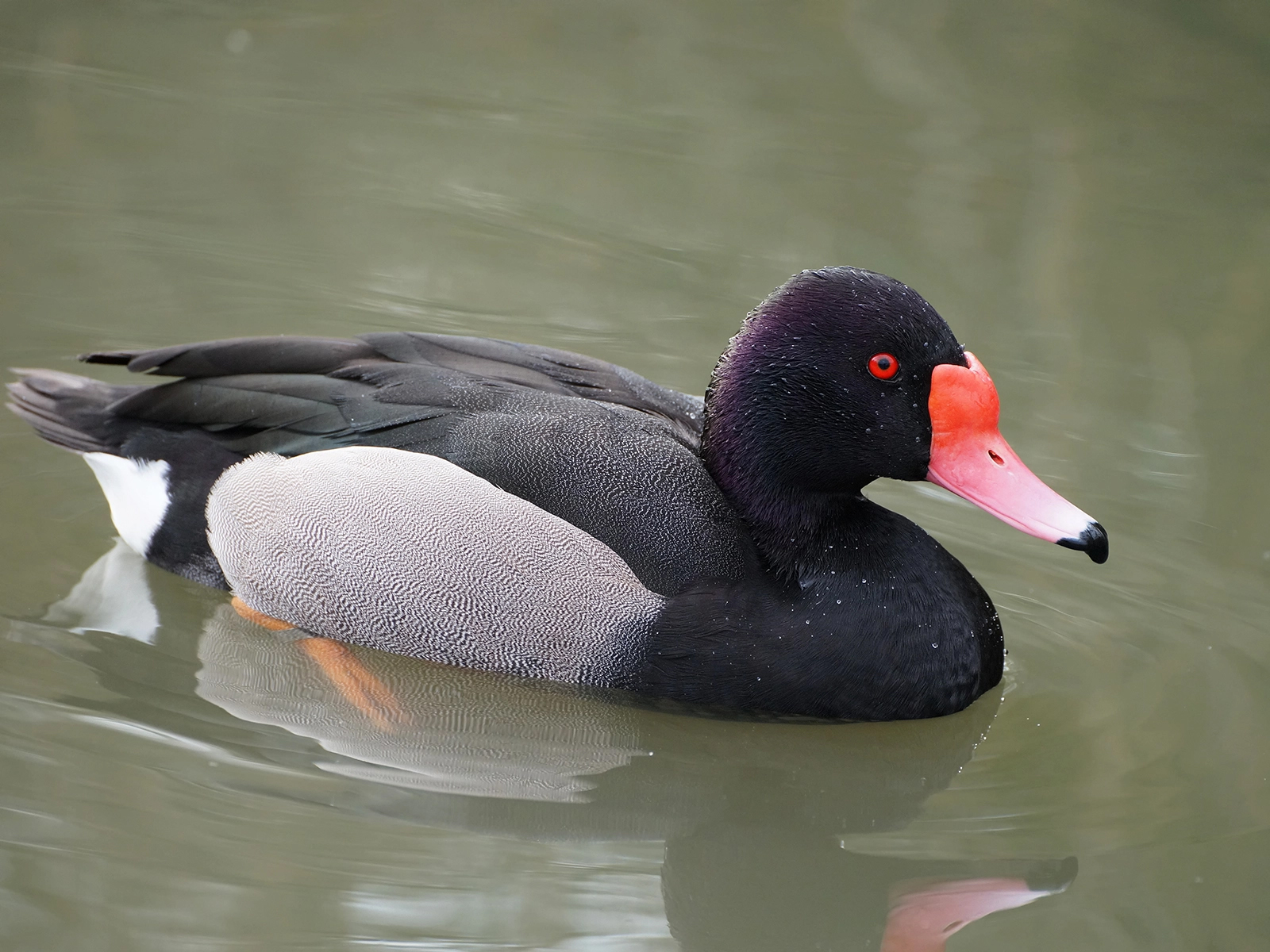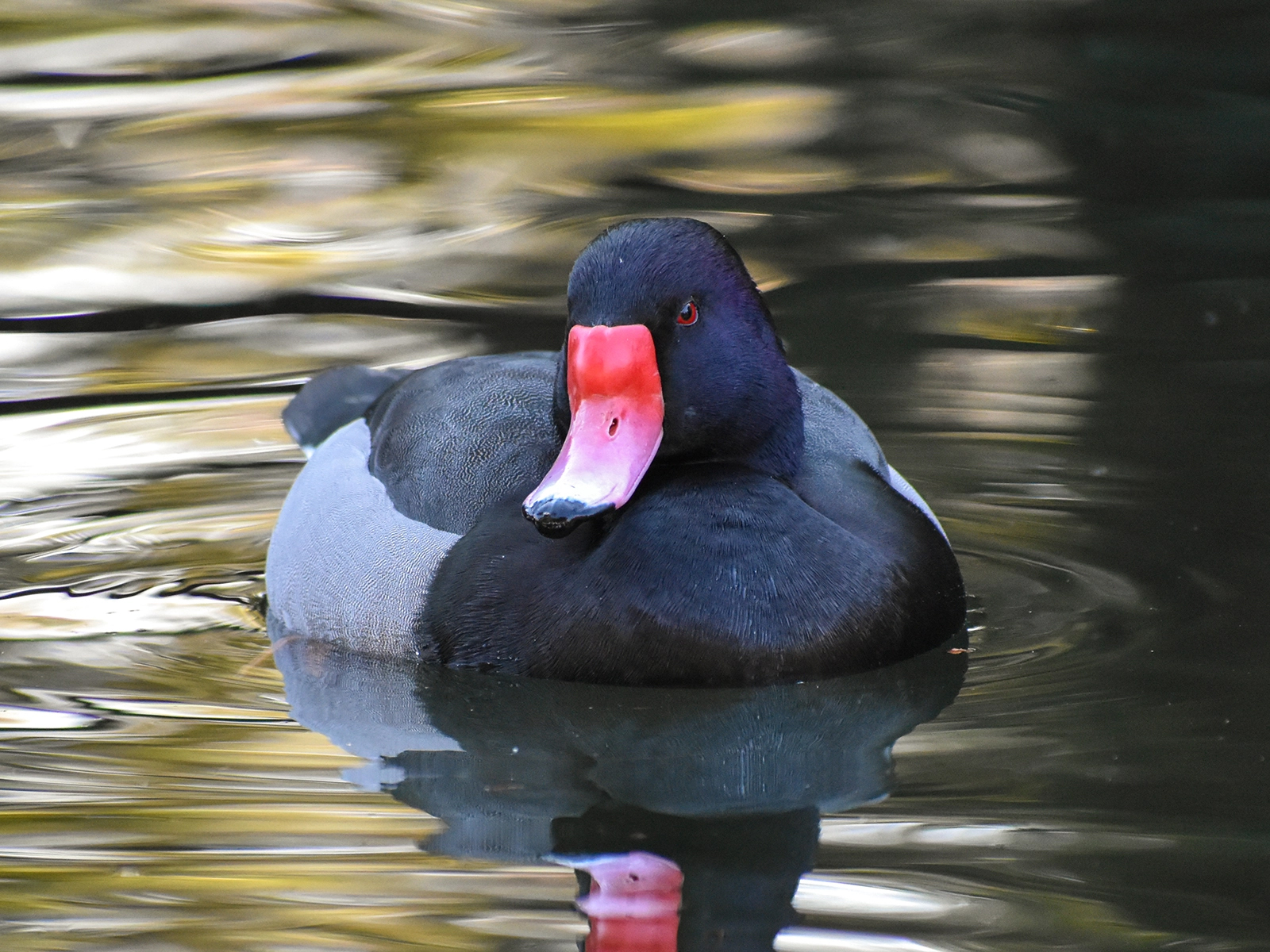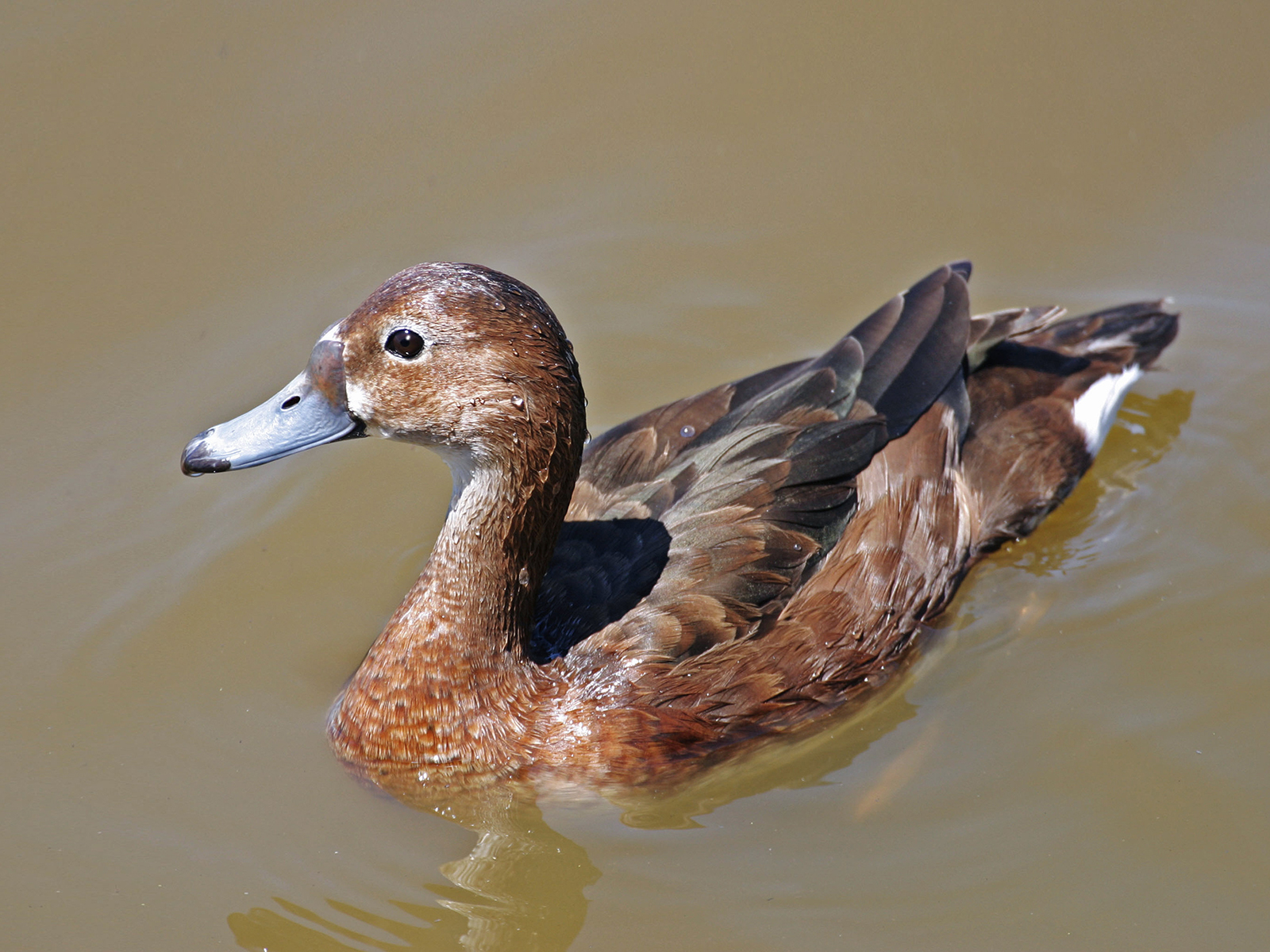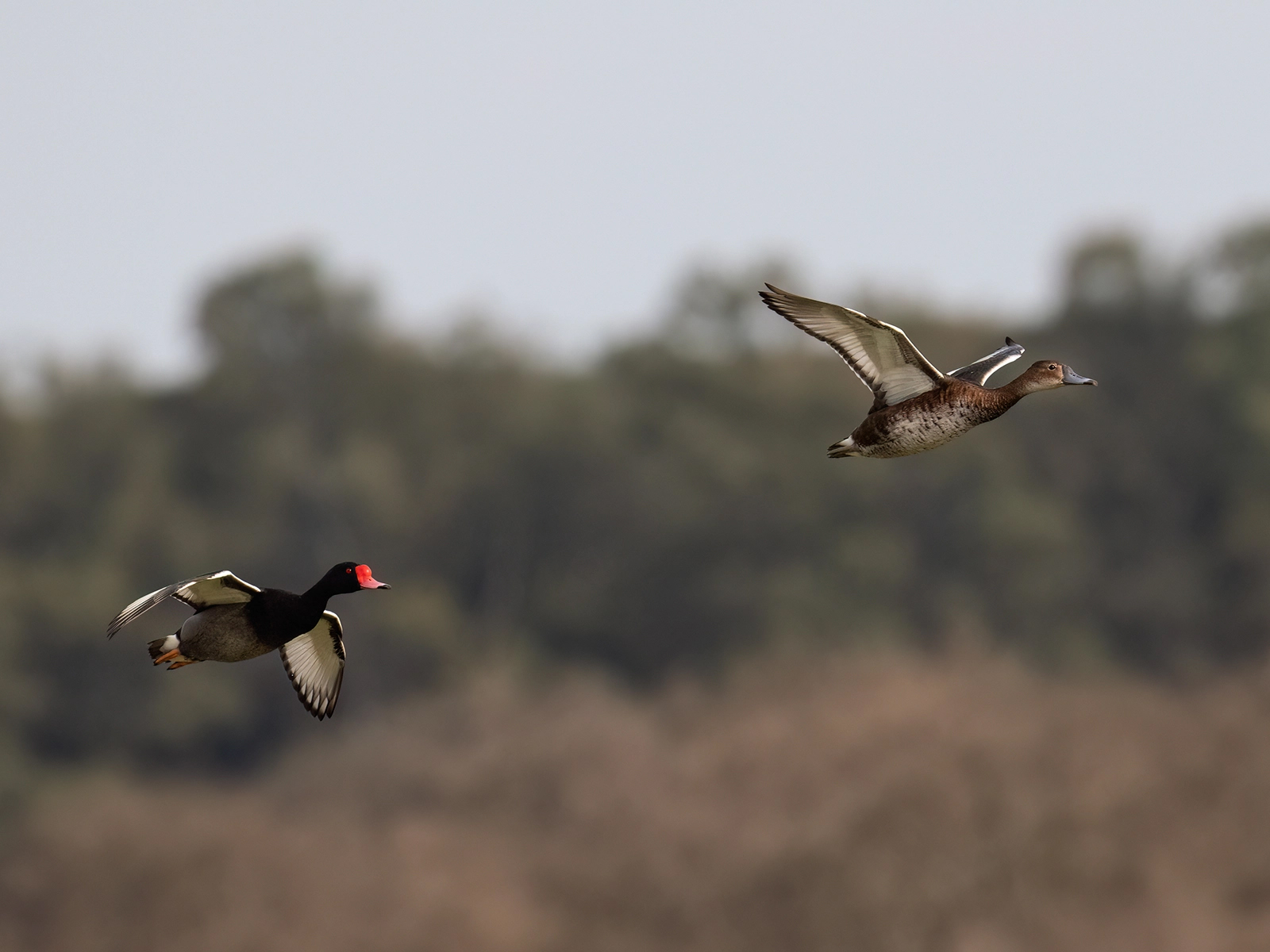Rosy-billed Pochard
Netta peposaca
Class
Aves
Order
Anseriformes
Family
Anatinae

Aves
Anseriformes
Anatinae
Argentina and central Chile, through southern Brazill
Length: 21 - 22 in
Wingspan: 28 -33 in
Weight: 2.2 - 2.6 lbs
Generally found in fresh and saline wetlands with abundant vegetation
Clutch of up to 10 eggs
Incubation: 27 - 29 days
Seeds, roots, aquatic plants, grasses, and sedges
Least Concern

Males have a bright rosy red bill with a bulbous basal shield that increases in size and color during the mating season. The head, neck, breast and back are purplish-black and the flanks have black and white wavy lines. The legs and feet are yellow to orange.

Females are almost all brown with a darker back. The breast is also barred with a darker brown. The bill is bluish-gray with a black tip. The legs can be yellow-orange to grayish. Young are similar to the females in appearance, but are darker brown on their underparts.Both sexes have striking white flight feathers.

Rosy-billed pochards are highly social and may congregate in flocks of thousands. They feed by dabbling on the surface of the water or upending in shallow water, but they rarely dive. Occasionally they graze on the land as well.